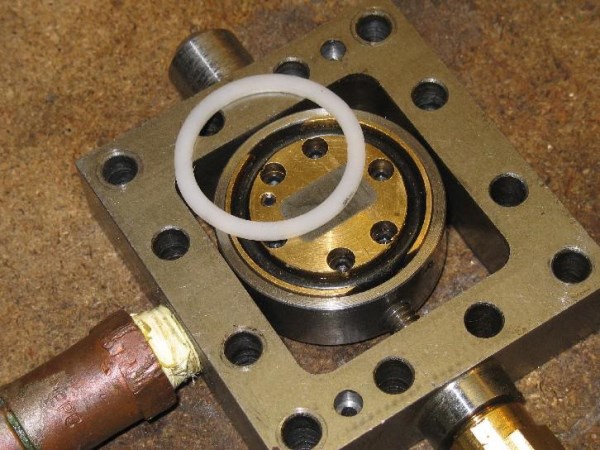
Appendix to Steam Happens #28: My Latest Experiences With Balanced D Valves
My first attempt at a balanced D valve was a rather
complex two-piece brass design using a Teflon ring backed up with a standard
O-ring
(for compression, sealing the system and pressing the Teflon ring against the
ground inside surface of the steamchest cover ).

The Teflon proved much too soft and was replaced by a rubber ring which,
while it performed better, also proved too soft,
specially in areas of the ring groove where the O-rings were not well confined
or supported.
You can check out this March 2010 phase of my modification here:
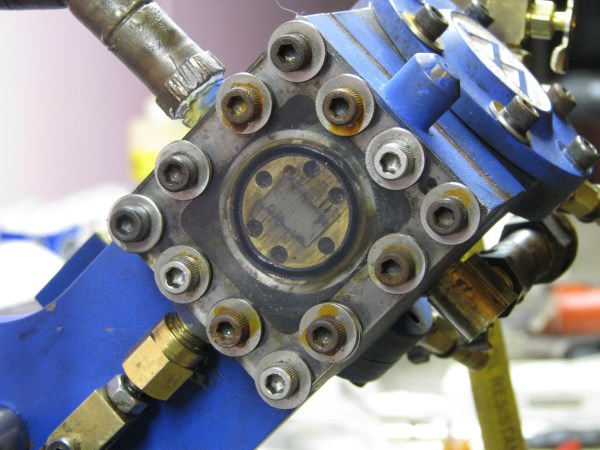
Consequently, I then modified my Reliable Compound's HP steamchest and
standard D valve for side admission and installation of an aluminum "balance
cup"
with two layers of Viton O-rings, an inner one of 1/16 inch cross-section and an
outer one of 1/8 inch cross-section that pressed against and slid upon the
inside of the steamchest cover.
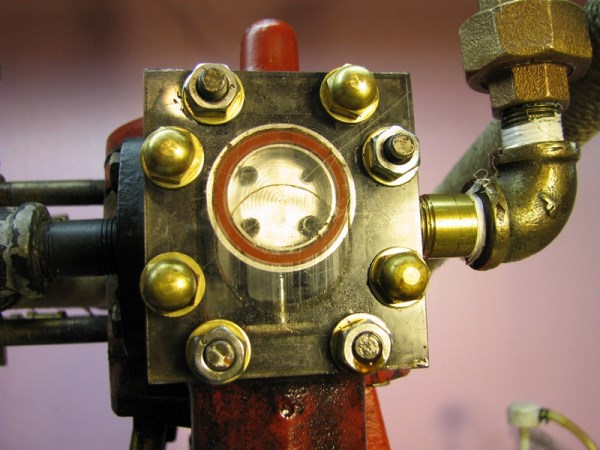
Here's what the cup looked like with the deeper narrow ring installed. Note
the four high pressure steam passages located in the O-ring groove.
This helps keep pressure behind the larger O-ring, sealing and pushing it
against the inside of the steamchest cover.
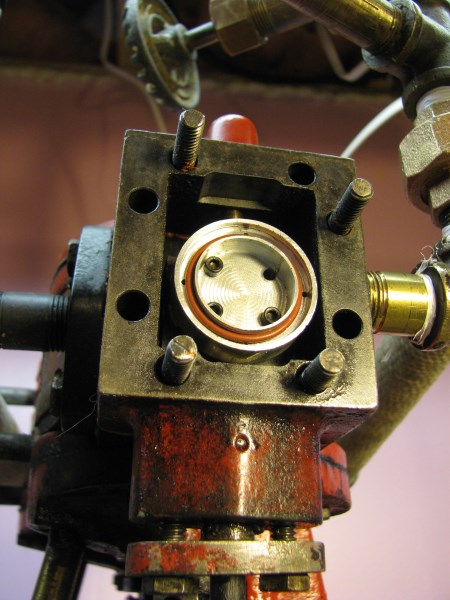
If you wish, you can check out my 2012 video on this phase of my project here:
I then ran the engine for a few weeks until I inadverdantly layed it up with
some water in the steamchest.
The resulting small amounts of rust on the steamchest cover quickly chewed up
the Viton ring. A stainless steel shim was then installed as a rust-free
sliding surface for the Viton ring.
To aid in drainage of the balance cup, the lower right cap screw (shown
above) was moved to the upper right position. This aided in drainage of
the exhaust pressure pocket of the balance cup.
As an experiment, I ran this set-up for three seasons without changing the ring.
Here's what it looked like as it was removed from the engine..
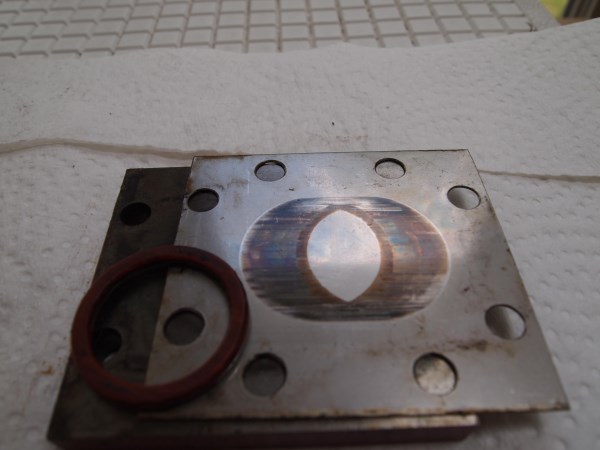
The Viton O-ring showed some compressional distortion and wear. The stainless
shim showed discoloration from deposited Viton and other contaminant materials.
However, it easily polished to a bright, matte finish with no discernable
fingernail-test wear.. Over the three years there was no diminishment in engine
performance.
Meanwhile, one of my son's neighbors had been restoring a Troy D-valved vertical mill engine with built-in separate external and internal oiling systems.
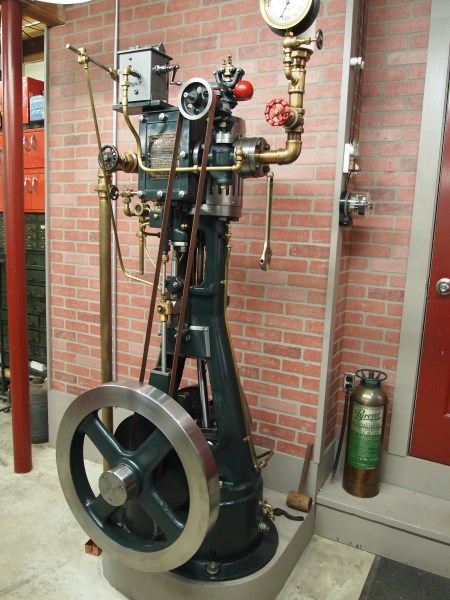
The D valve mechanism looked like this before steam valve restoration.
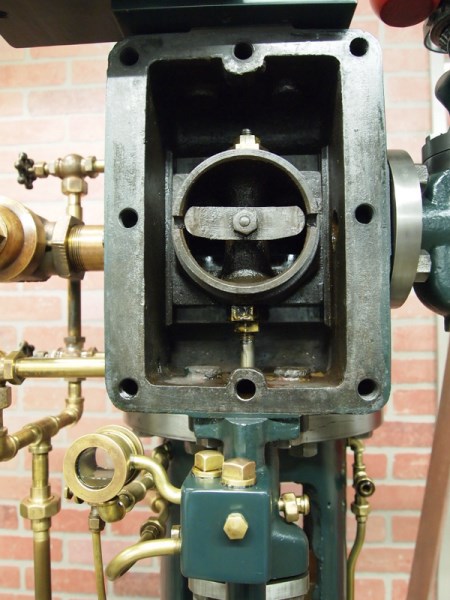
Note the wear on the steamchest cover.
The cast iron balance ring was worn to the point where the steel support ring
was in also in contact with the steamchest cover.
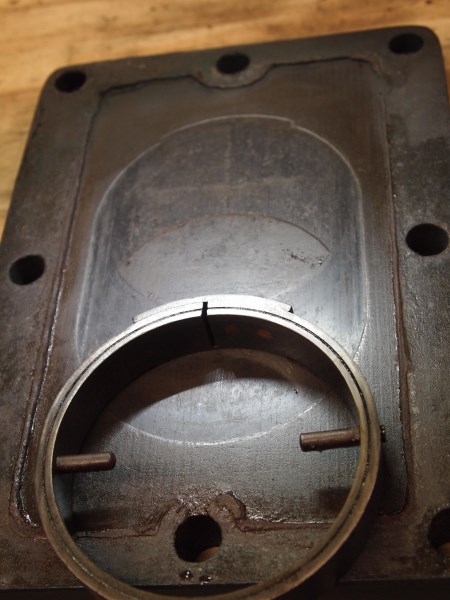
Check out this video of the Troy engine running on compressed air. At this point the entire engine had been restored except for the steamchest and balanced valve.
Note the decent performance in spite of the deep wear of the balance ring and
interior of the steamchest cover.
The only remaining issue in this type of balanced D valve design remains in
the choice of ring materials and the stationary sliding surface.
Sooo... while I'm quite happy with the performance of Viton sliding on stainless
steel, I'll be messing around with modern alternatives in the future.